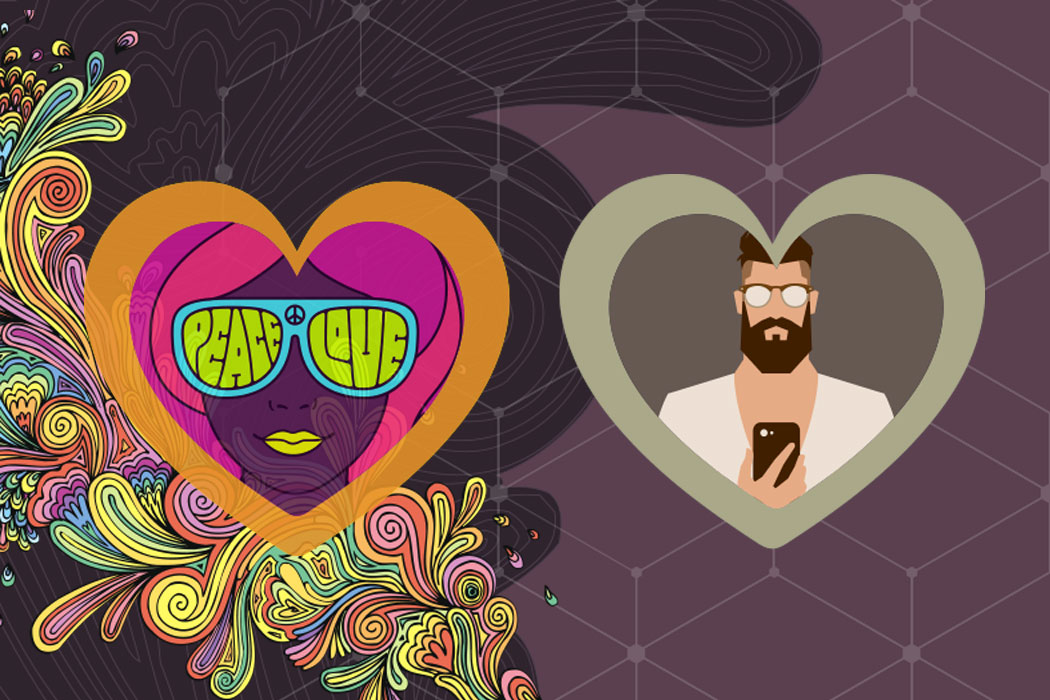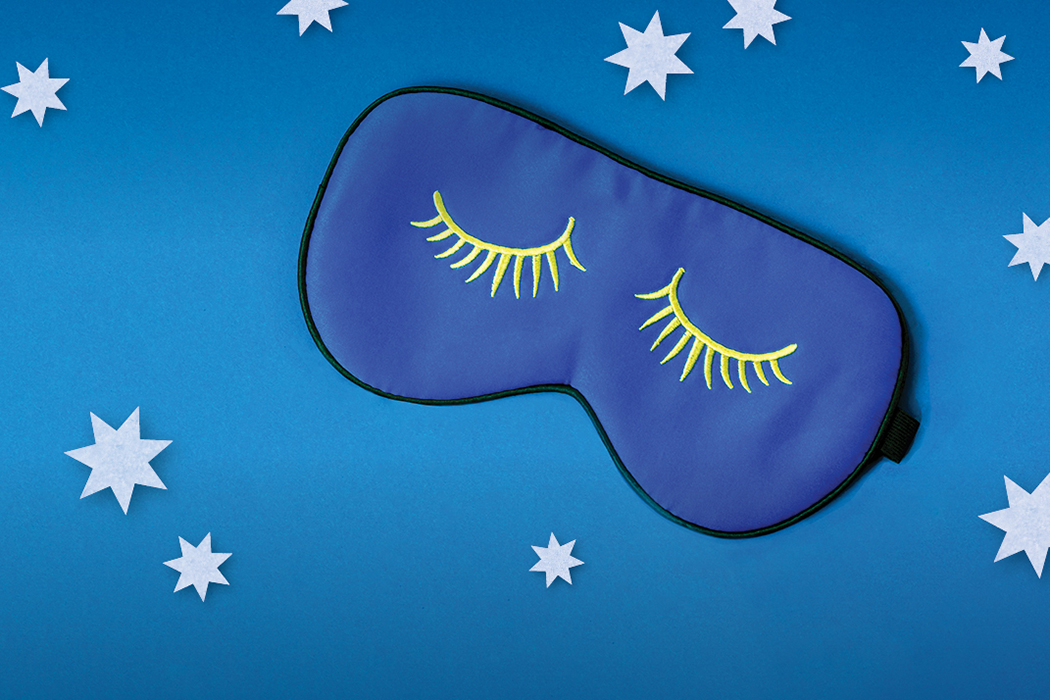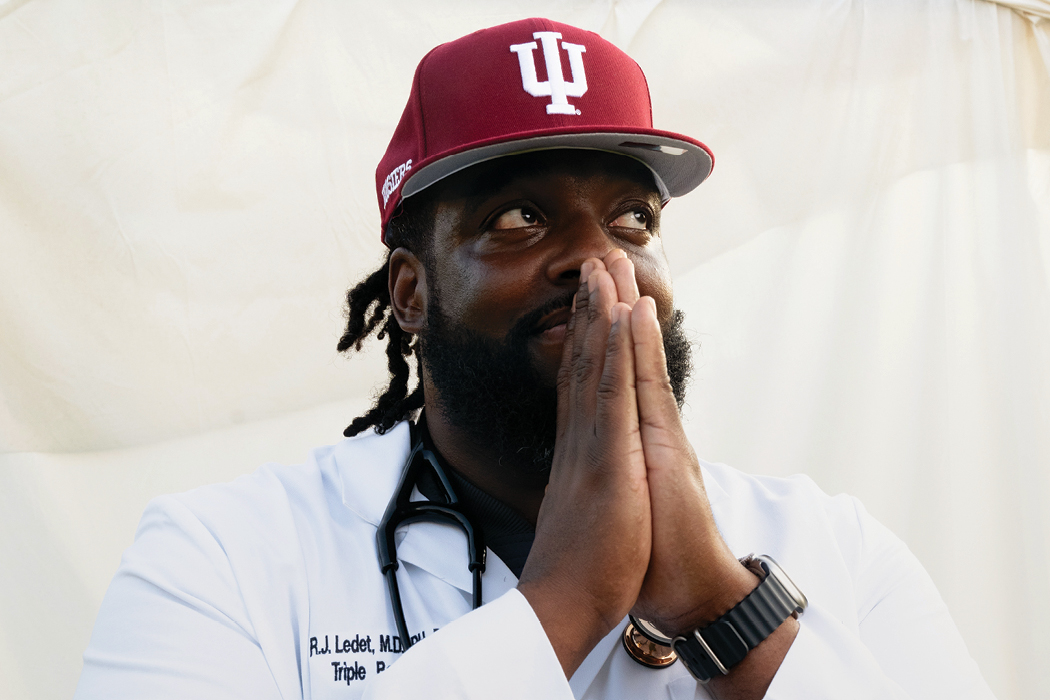Sex, Tech, and the Drive to Love

The times they are a-changin’.
For the first time in human history, more people are meeting their partners on the Internet than by any other means. Dating sites like Match.com and Ourtime.com, as well as apps like Tinder, Grindr, and Bumble, have given modern daters more access than ever before to potential mates—an evolution that is fundamentally changing the way we find love.
“For millions of years, we found partners based on knowing someone in our extended kin networks,” says Justin Garcia, Ruth Halls Associate Professor of Gender Studies and associate director for research and education at the Kinsey Institute. “In the context of mating, you can see the other person, hear them, smell them. You can invoke bodily senses that we’ve used for all of human history. When we court someone online, we’re in evolutionarily uncharted territory.”
Garcia and his colleagues at the Kinsey Institute are attempting to chart the uncharted, to document this distinctive moment in the evolution of human sexuality, just as Alfred Kinsey himself did 70 years ago. One of the ways they’re doing so is through their involvement with Match.com’s Singles in America study. Since 2010, Garcia and Helen Fisher, senior research fellow at Kinsey, have served as scientific advisors for the study, which asks singles across the country “how it feels, what it looks like, and what it means to be single today.”
“Match.com fully sponsors the study and we help interpret and disseminate the findings,” Garcia notes. “We get the raw data and we use it to test scientific hypotheses and publish our findings throughout the year, and Match gets to better understand its clients. It’s a great example of a partnership between academics and industry.”
The raw dataset from the Singles in America study has proven fertile ground for understanding how technology is shaping our romantic lives, our expectations of courtship, and the ways in which we express our sexuality.
“In the past, you might have to flirt with someone at a bar,” Garcia notes. “Now, with technology, there are niche platforms that allow you to focus your search. If you’re interested in a tall redhead, you can find someone. A sense of humor? You can find that person. Technology has enabled us to find people with similar interests and connect with them right away.”
GPS, emojis, and the rise of hookup culture
When Garcia says “find someone,” he means literally. GPS location services on apps like Tinder provide users with photographs of geographically close potential mates. Users can then swipe right to “like” the photograph. If users like one another, they “match” and can communicate via text message.
The ways in which potential partners communicate is of particular interest to Kinsey researcher Amanda Gesselman, the inaugural Anita Aldrich Endowed Research Scientist. “Now that we’ve moved on to the point where Internet dating is number one, and we have no sensory experience of our potential partner, we essentially have one or two sentences to make a connection with people,” says Gesselman. “In the age of 140 characters or less, how are we connecting with one another?”
One answer, according to Gesselman’s research, is through emojis, which enable users to humanize an online interaction and create chemistry with potential partners. “There’s evidence that people who use more emojis with potential partners on apps or sites are more likely to get dates and are having more sex than those who don’t use emojis,” Gesselman notes. “Greater emoji use was related to more attentive, more stable, and more extroverted partners.”
Emojis also enable contemporary daters to stand out from the dozens of matches they can accumulate. According to the latest statistics released by Tinder in 2016, the app’s 50 million active users swipe 1.4 billion times a day, resulting in 26 million matches. “Just the magnitude of the amount of connections has changed the way people interact and look for dates,” Garcia notes.
All of these factors—the ease with which we can connect with one another, the level of specificity we can achieve in our search for a potential mate, and our sheer volume of dating options—has helped accelerate what many refer to as “hookup culture.”
Garcia defines hooking up as an uncommitted sexual encounter between people who are not dating and who are not in an exclusive relationship. But technology is just one driving factor behind the evolution of hookup culture. In an article published in the American Psychological Association’s Review of General Psychology, Garcia cites social and biological reasons for the increasing acceptance and occurrence of casual sex: Adolescents are reaching puberty faster and getting married later than ever before, creating an increased period of time in which they can be sexually active. What’s more, younger singles today have grown up in a popular culture saturated with representations of casual sex—a marked difference from their parents and grandparents.
All of this begs the question: If hookup culture represents a second sexual revolution, how does it compare to the original?
Hookup culture and the sexual revolution
Alfred Kinsey is considered by many to be the father of the Sexual Revolution. His Sexual Behavior in the Human Male (1948) and Sexual Behavior in the Human Female (1953) were based on sexual histories he and his research team collected from over 12,000 interview subjects. The books, which would later be known as The Kinsey Reports, became bestsellers. But more importantly, they shone a light on the diversity of sexual practices in America.
“Instead of studying institutions or prejudicing anything, Kinsey took the approach of following the species and their behavior,” notes Judith Allen, Walter Professor of History and recipient of the inaugural College Arts and Humanities Institute/Kinsey Institute Fellowship. “If the animal did it, it must be natural to the organism.”
Allen contributed to The Kinsey Institute: The First Seventy Years, a book that celebrates the enduring legacy of Kinsey and how the institute has continued to shape our understanding of sexuality to this day. “Kinsey located sexuality in culture in a way that hadn’t really been done before,” Allen says.
“Maybe there are people who ‘blame’ Kinsey for the Sexual Revolution in the sense that, if perhaps we could have kept from knowing what other people were doing, we would have been able to stop them from doing it,” says Sue Carter, executive director of the Kinsey Institute. “But I don’t think Kinsey caused the Sexual Revolution. I think the Vietnam War caused young people to face death, and they weren’t happy, and they started to live their lives in the moment. The birth control pill was also widely available, and women began to think of themselves as equals, and sexual behavior was, to some extent, liberated.”
Justin Garcia believes that the first sexual revolution is still happening. “Part of what happened in the earlier sexual revolution was the start of really fighting back against stigma and particular types of patriarchal views of sexuality,” Garcia says. “But I don’t think the ’60s changed everything. It was the initiation of a process of change. We’re still having that revolution. We’re just beginning to better understand diversity in people’s sexual choices.”
The drive to love
The picture painted by most articles like this one is dour. Modern daters are cast as lonely phone-swipers, their faces illuminated by the cold glow of their devices, mindlessly toggling through a series of potential partners, yearning to connect to the world around them through a five-inch screen.
Or they’re portrayed as oversexualized trophy collectors, scheduling three or four dates with just as many potential suitors in the same week.
But the researchers at Kinsey believe that modern dating is not as dystopic as many articles on hookup culture would have us believe. “I get a lot of media requests to talk about how the age of Tinder and Grindr and these instant access types of apps have messed up dating,” Gesselman says. “They usually have a depressing tone and they’re talking about how romance doesn’t exist and love is declining. That’s not the case at all.”
“It’s not a dating apocalypse,” Garcia agrees. “The drive to love is way too much a part of what it means to be human. I just think the rituals of courtship have changed.”
“It’s an exciting time to work on these topics,” Garcia adds. “There are radical transformations happening literally overnight.”
Onward: Kinsey at 70
As the Kinsey Institute celebrates its 70th anniversary and continues to explore the crucial questions that define us as sexual beings, Garcia, Gesselman, Allen, and Carter still wrestle with the phobias, prejudices, and challenges that Kinsey faced in the 1940s.
“There’s still such an anxiety about the study of sexuality,” Allen offers. “It’s doomed to be controversial because there’s an idea among people that if they know about something, it will elicit desire. You’ll turn them into perverts.”
“Sex research has never been well funded by the NSF or NIH,” Garcia points out. “It’s incredibly difficult to get any federal money, so we survive on the generosity of donors—individuals, foundations, and industry partners. In order to keep doing research and to push that research into the future, we need the support of generous donors.”
In a world that, for many modern daters, seems fragmented and exhausting—fraught with a thousand swipe judgments and millions of possible paths—Kinsey researchers are doing important work. They are identifying and documenting the many ways our sexuality can be expressed, how we find and sustain love, how we can truly, deeply, meaningfully connect with one another. They are doing so without prejudice or judgment or bias, merely an interest in putting their finger on the pulse of that which makes us human.
They could use a little help from their friends.
If you’re interested in supporting the important research of the Kinsey Institute, please use the button below, or contact Herb Caldwell, director of development, at 812-855-7686 or herbcald@iu.edu.
This article was originally published in the fall 2017 issue of Imagine magazine.
Tags from the story
Written By
Ryan Millbern




